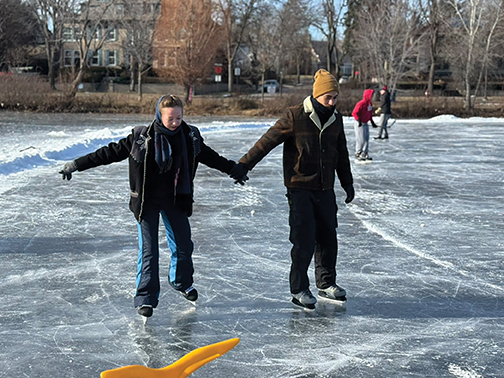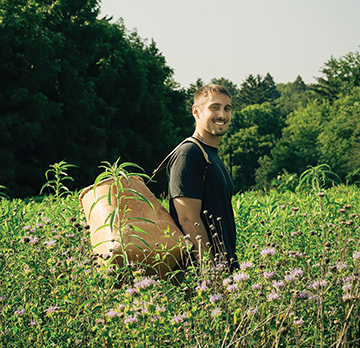A few years back I watched a cringeworthy short video of myself at a podium presenting an award. Whatever I was saying blew past me because I could only focus on one thing — I looked so hunched over! I didn’t have the faintest notion that my posture was so bad. What was up with that?
Some years passed, and I began to notice that many of my friends and acquaintances were holding themselves like “old people,” that age category most of us boomers try so desperately to avoid.
As our minds keep churning, we lose track of what our bodies are doing. Instead of standing tall, we often settle into a subtle or perhaps a blatant hunch. When walking, we let our noses and heads do the leading, and our bodies follow. The perfect requisite training for using a cane.
This spring I received an intriguing email from the manager of my choral group. All of us were offered a discount to an “Alexander Technique for Musicians” summer class at the University of Minnesota School of Music.
I felt a pull. I wanted to sing better and stand straighter. Plus, I had read about a possible connection between good posture and good mental health. As one clinical psychologist put it, “If you can only do one thing to start the day — for god’s sake — stand up straight!”
Before the class, Brian McCullough, a certified trainer and professional trombonist, had us do some background reading. I learned that F. Matthias Alexander was born in Australia in 1869. He dreamed of becoming a famous actor, but repeatedly lost his voice during performances.
Using a series of mirrors and watching himself closely, he understood that it wasn’t just his larynx that needed changing — his whole body had lost its natural alignment, and various muscles were unconsciously tightening up.
His voice came back stronger than it ever was. He used his experience to develop a training course that is widely taught today. And as I was to learn, it’s really intended for everyone, not just musicians.
But let’s get back to class. I admit I was nervous. But the minute I walked into the large rehearsal room, I sensed a calm and very friendly atmosphere.
It turned out that only six people had signed up for the course. There were three men including me, and three women, all amateur or professional musicians. I was the only singer. One of us was in a wheelchair. Everyone brought their instruments, as instructed.
After some brief intros, we learned that “stations” had been set up everywhere, and for each of the five mornings, we would progress from one to the next. The basic idea was to learn how to correctly “hold ourselves” naturally again, whether it be standing, walking, sitting, on the floor, sitting down or standing up, or playing your instrument (or in my case, singing).
There was also enough down time, though. We watched some hilarious performance videos, got read to while laying flat on the floor or a table (what a luxury), and ate snacks together. I was fascinated by the personal stories I heard.
I do have a warning to those born and bred in Minnesota who may be physically wary: the focus of the instruction was very “hands on.” But I can assure you it was a “good” hands on.
Have you ever noticed how much faster you can learn something when someone actually takes your body and puts it through the right motions?
At one of the practice sessions the instructor laid his palm on the back of my neck while I tried to sing, and then tapped on areas of my face wherever he thought I was tensing up. Awkward, yes, but also very effective.
I finished the weeklong course feeling energized and more relaxed at the same time. I wasn’t ready to say goodbye to any of these folks, and I will probably sign up for more lessons. I don’t know if my singing has improved yet, but I know I’m walking and standing taller. And for someone who’s lost a little height lately, that’s a great start!






